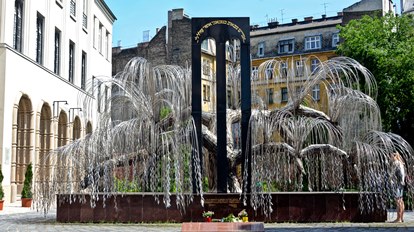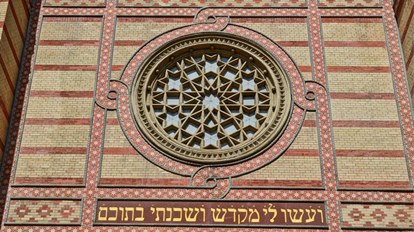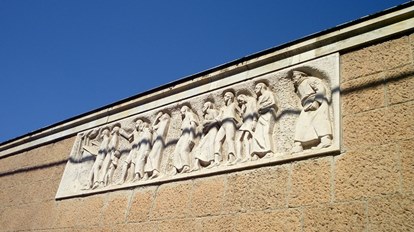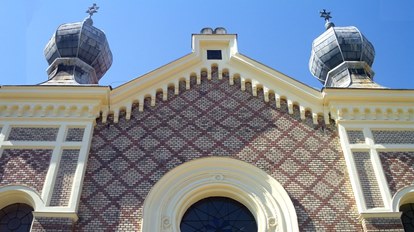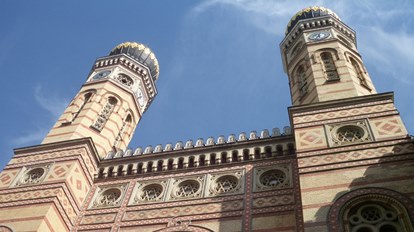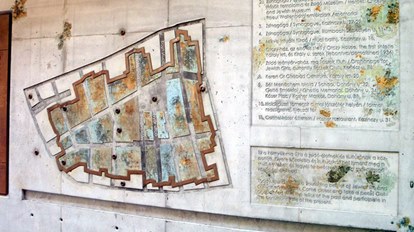Jewish quarter of Budapest
Jews have lived in Hungary for over 1,000 years. Budapest is the seat of the main organizations of Hungarian Jews: the Federation of Hungarian Jewish Communities, the Autonomous Orthodox Community and the Conservative Union of Hungarian Jewish Communities. Since 1992 the Sim Shalom Reform Community has been based in Budapest and is led by a Jewish woman rabbi. Since the late 1990s, the Chabad Hasidic movement has been active in the city. There are Orthodox, Conservative and Progressive synagogues in Budapest. The city has three Jewish primary schools, one secondary school, several Jewish kindergartens, a rabbinical seminar and a teachers' college. There are 3 kosher restaurants.
The Jewish quarter of Pest was located before World War II around the
synagogue in Erzsebetvaros. The synagogue itself, which is the largest in
Europe, was built in 1859 by the Viennese architect Ludwig Förster, author of
the Vienna Synagogue.
During the liberation of the ghetto on 18 January 1945 there were around 3000 unburied bodies lying in the streets. By necessity, 1,140 known by name and 1,170 unknown fascist victims were buried in 24 mass graves on the grounds of the synagogue, which is the only one in the world to have a cemetery in its courtyard.
During the walking tour you will see the most important sites of Hungarian Jewish history as you walk through the streets of the neighbourhood. The tour does not include visits to synagogues, which are entered with an admission ticket and their opening times depend on the days of the week and Jewish holidays.
4-6 persons 360
7-11 persons 490
12-18 persons 510
19-33 persons 610
33-49 persons 630
